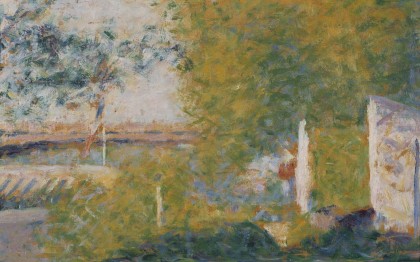When the Impressionist exhibitions were stalling, the year 1884 saw the creation of a Society of Independent Artists in which Cézanne, Gauguin, Pissarro, as well as Seurat and Signac respectively 25 and 21 years old, participated. In 1886, Seurat caused a sensation at the final exhibition of the Impressionist group with A Sunday afternoon on La Grande Jatte*, a painting in which he used juxtaposed pure colours. This work marks the emergence of a more theoretical approach, inspired by the scientific research that was in the process of changing the understanding of coloured perceptions.
This new conception of painting, called Neo-Impressionism, Divisionism, or even Pointillism quickly gained supporters. The painter Maximilen Luce adopted it in 1887 for his first exhibition at the Salon des Indépendents. The same year, the XX group which united the most modern artists in Belgium, invited Signac and Seurat. They were joined in 1888 by Louis Hayet who exhibited Les bords de l’Oise. The Belgian painter Van Rysselberghe and the Dutchman Jan Toorop converted that year to the new manner. Each interpreted the tenet of the separation of shades with varying rigour, but they all adopted the mosaic touch that is so characteristic, dissolving forms and exalting colour.
These young artists could only be interested in aquatic reflections which had seduced the Impressionists so much. This motif, which plays on the diffraction of light, allowed them to verify the relevance of their theories and to distinguish themselves from their elders. After Seurat’s death in 1891, Signac adopted a broader manner as in Les tartanes pavoisées painted in Saint-Tropez, whose bright colours prefigures the following revolution in painting: Fauvism.


